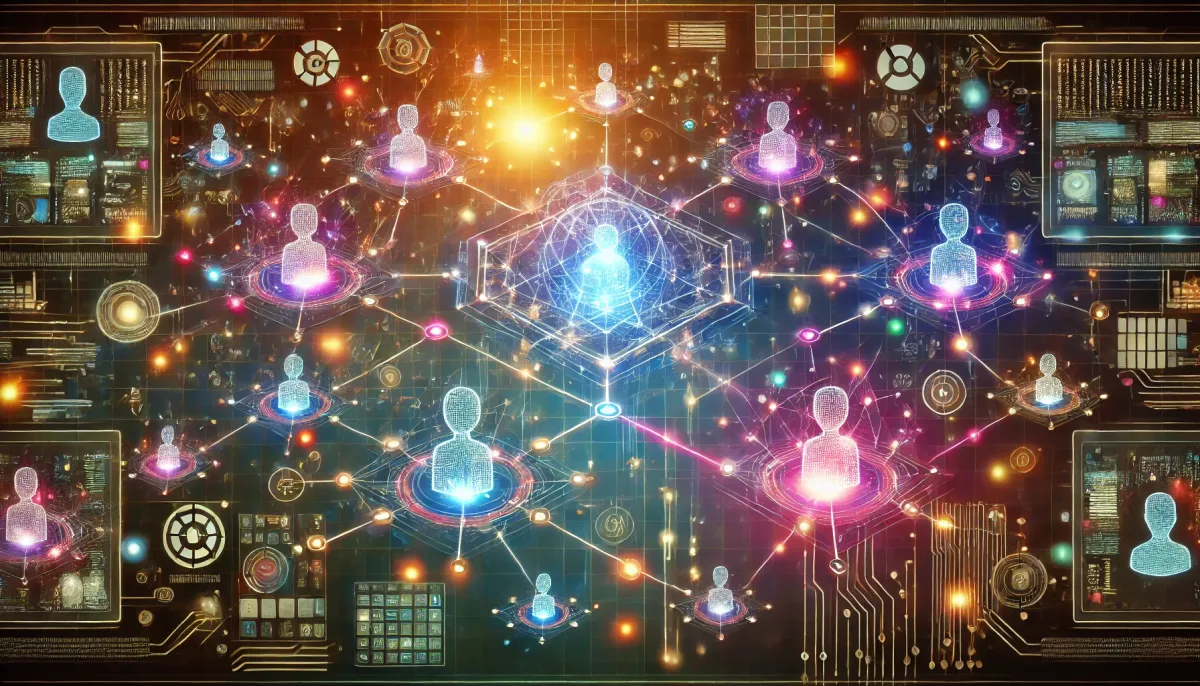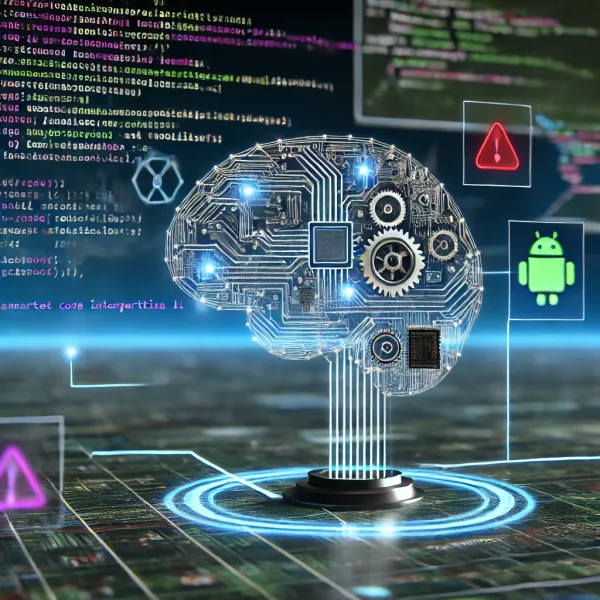A Comprehensive Guide to AI Agents: Architecture, Tools, and Use Cases

Introduction to AI Agents
AI agents are becoming an essential part of our tech landscape, offering powerful tools to automate tasks, build dynamic interactions, and enhance decision-making capabilities. But what is an AI agent exactly? In simple terms, an AI agent is a system capable of making decisions and executing tasks autonomously. These intelligent systems can range from simple chatbots to highly sophisticated swarms of agents solving complex problems.
What is an AI Agent?
An AI agent is an intelligent system that interacts with its environment, processes input, and takes actions to achieve specific goals. It can be as simple as an automated bot responding to customer queries, or as complex as a network of agents managing logistics for a supply chain. In this context, the term "agentic" refers to the ability of AI systems to act with some level of autonomy, often making them capable of solving problems without human intervention.
The field of agentic AI is gaining traction, especially with advancements in Large Language Models (LLMs). Today, you can find everything from agentic chatbots to full-fledged AI agent swarms that work in collaboration to accomplish complex objectives.
AI Agent Architecture
The architecture of AI agents typically includes several core components:
- Perception: This allows agents to perceive their environment. It could be through sensors, data streams, or pre-programmed inputs. In other words, this can be the available context of the LLM model.
- Decision-Making: Based on the perceived information, agents make decisions to fulfill their goals. This often involves rule-based systems, neural networks, or probabilistic models.
- Action: Finally, the agents act on the environment, which could be as simple as displaying text or as advanced as executing a physical action with robotics.
The combination of these components forms a cycle, where an agent continuously perceives, decides, and acts. This loop helps in maintaining the intelligent behavior of agents, enabling them to react to changes in their environment.
These agents can be used for different purposes like automating workflows, customer service, or even developing new applications autonomously.
AI Agent Frameworks
Building an AI agent often involves the use of specific frameworks to help streamline the development process. Some popular AI agent frameworks include:
- LangChain: Primarily focused on creating agents that can understand and generate language. This is widely used for chatbots and content-generation agents. One downside of using langchain is writing a lot of bootstrapping code to run a simple agent.
- AgentGPT: An accessible framework to build and deploy autonomous agents. Good for basic tasks but lacks certain feature required for production use.
- n8n AI Agents: n8n provides a low-code platform where agents can be integrated into workflows.
- Zapdroid: No-code agent solution with available computing engine and dedicated storage space, with extendable SDK to add more skills to your agents.
These frameworks provide powerful abstractions and tools for building, testing, and deploying intelligent agents. From open-source AI agents to proprietary systems, there are many options to cater to different needs.
No-Code AI Agent Builders
The trend of no-code AI agent builders is making it possible for non-developers to create their own agents. Platforms like Zapdroid, AgentGPT and n8n allow for an easy AI agent creation experience, requiring minimal technical expertise. This democratizes access to AI technology, letting businesses quickly create and deploy customized AI solutions.
AI Agent UI and UI Design
User interfaces play a crucial role in how effective an AI agent is. The AI agent UI design must be intuitive, making interactions seamless for users. A well-crafted UI helps in increasing user engagement, making it easier to understand and work with the agents.
When designing an agent's UI, keep in mind the following best practices:
- Clarity: Keep the user informed of the agent's capabilities.
- Feedback Mechanism: Ensure the agent gives meaningful feedback during interactions.
- Minimalism: Don't overload the interface with too many options at once.
AI Agent Swarms
An emerging field in AI is the concept of AI agent swarms. In essence, a swarm consists of multiple agents working collaboratively to solve more extensive and more complex problems. Think of it as a team of intelligent agents where each one contributes a piece of the solution. Swarm intelligence is inspired by social insects like ants and bees, and it's incredibly useful for applications like distributed systems, logistics, and large-scale data analysis.
For example, a swarm of agents could be used for coordinated exploration, where each agent collects data from a different region, and then combines their knowledge to build a comprehensive map or model.
AI Agent Workflows
A significant part of deploying AI agents lies in orchestrating effective workflows. This includes everything from data ingestion to training and inference. Tools like Zapdroid, n8n AI agents help in designing these workflows in somewhat visual way, making it easier for businesses to implement LLM AI agents into their existing infrastructure without requiring significant technical know-how.
For instance, a chatbot agent can be programmed to follow a specific workflow: greeting the user, extracting relevant information, answering queries, and escalating complex issues to human agents. Creating seamless workflows is key to making these agents effective in the real world.
AI Agents Marketplace
With the increasing use of AI, there are now AI agent marketplaces where you can find, purchase, or even sell AI agents. These agents range from simple bots to highly sophisticated LLM AI agents that integrate with multiple data sources.
The AI agent directory on platforms like these serves as a valuable repository of agents, making it easy for users to select agents based on their requirements.
Fetch.ai's Agentverse: A platform that allows developers to create, deploy, and orchestrate AI agents. It offers a multi-agent system for tasks like business automation and integrates with popular frameworks like Langchain and Vertex AI.
DingTalk AI Agent Marketplace by Alibaba: This marketplace features over 200 AI agents that focus on enterprise productivity, industry-specific tools, and multimodal capabilities. DingTalk's ecosystem allows third-party developers to list their agents for a wide range of business functions.
Solidus AI Tech Marketplace: Set to launch soon, this marketplace offers AI agents built on top of foundational models, available through APIs. It’s designed for businesses to easily integrate advanced AI tools and applications into their systemsBuilding AI Agents from Scratch
If you’re technically inclined, building an AI agent from scratch can be a very rewarding experience. It requires knowledge of machine learning, programming (commonly in Python or JavaScript), and an understanding of the agent’s architecture. A good place to start is by using frameworks like LangChain or Replit Agent AI, which provide the necessary building blocks to create an agent without having to start entirely from zero.
If you don't want to code or want to use minimum amount of code, Zapdroid might be a good AI agent framework for you.
A typical process might involve the following steps:
- Define Objectives: What task will the agent perform?
- Environment Setup: Decide on the tools and frameworks.
- Implement Perception and Decision-Making Modules: Use machine learning or rule-based systems. (initially rule-based system outperform for quick ROI)
- Deploy and Iterate: Deploy the agent, gather feedback, and improve.
There are many online AI agent tutorials and resources that can guide you step by step.
AI Agents Use Cases
The use cases for AI agents are extensive and growing:
- Customer Service: Chatbots like Zapdroid, AgentGPT are handling customer queries 24/7, reducing operational costs.
- Automation: Genie AI Agent and n8n AI agents are automating complex workflows in businesses.
- Data Analysis: Zapdroid agents can sift through large amounts of data to extract relevant insights, making them popular in research and data-centric industries.
- Voice Agents: AI voice agents can provide spoken responses, ideal for smart home systems or assistive technologies.
What is Agentic AI?
Agentic AI is an extension of the traditional AI agent concept, with a focus on autonomy and adaptability. Agentic AI agents are capable of setting their own sub-goals in pursuit of a larger goal, making them more versatile. The ability to act without direct human oversight differentiates agentic AI from regular rule-based bots or systems.
Agentic AI is particularly valuable in areas like cybersecurity and DevOps, where the system's ability to adapt to rapidly changing situations is crucial.
Conclusion
AI agents are more than just bots or scripts; they are autonomous, intelligent systems that can adapt, learn, and perform tasks that once required human intervention. From agentic chatbots to full-fledged AI agent swarms, these systems are rapidly transforming industries and everyday experiences. Whether you are a developer looking to build AI agents or a business seeking to leverage the latest in AI, the opportunities are limitless.
The ecosystem is expansive—you have AI agent frameworks for development, no-code AI agent builders for non-technical users, and AI agent marketplaces for those seeking out-of-the-box solutions. With tools like Replit Agent AI, AgentGPT, and Zapdroid, there is an agent solution for almost every use case.
So whether you’re diving into AI agent creation for personal curiosity or aiming to deploy an intelligent agent for your business, now is a fantastic time to start. Take a look at Zapdroid - and you can create your first AI agent in less than 5 minutes!
Which type of AI agent are you most interested in building? Let's discuss how we can bring your vision to life.

